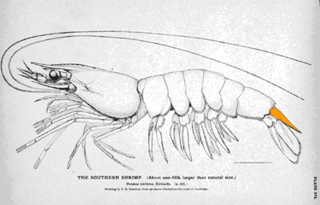尾节
来自维基百科,自由的百科全书
尾节(英语:Telson),又称尾柄,为节肢动物身体分节的最末节,没有附肢也没有神经节,因此并不是真正的体节。不同类群的节肢动物其尾节的形状与用途不尽然相同。


甲壳亚门
海螯虾、真虾下目与其他十足目的成员,其尾节与尾肢合并形成尾扇,透过快速搧动尾扇,可以以极高的速度向后弹开逃跑。透过此形式,磷虾可以60 公分/秒的速度逃离掠食者。从感受到刺激至触发行为,就算在低温下也仅仅需要55 毫秒。
螯肢亚门

多足亚门

倍足纲的尾节由肛门前无足的体节(肛上板)与一对肛侧板以及肛下板组成,将肛门完整包覆[2][3]。
唇足纲的尾节为最后一节体节,具有尾柄,还有一个生殖器官的开口[4]。
参考文献
Wikiwand - on
Seamless Wikipedia browsing. On steroids.
